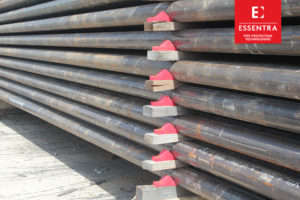Understanding the classification of rocks, including the essential characteristics of shale, provides valuable insight into geological processes and the methods used for extracting natural resources. Rocks are classified by a combination of their chemical and mineral composition, the texture of their particles, and the process by which they were formed. There are three basic classifications of rock.
First, igneous rocks are formed when molten magma cools. When a volcano releases molten magma to the earth’s surface, it is lava. Second, metamorphic rocks are formed from rocks that were subject to be changed by extreme temperature and pressure changes causing the minerals to actually be transformed either into other kinds of minerals or varying forms of the same minerals.
Third, sedimentary rocks are formed over millions of years from weathering agents (such as wind, water, and ice) having worn away larger rocks into gravel, pebbles, sand, etc. Then, once again over long periods of time, these broken down pieces of rock are pressured into flat layers of new rocks called sedimentary rock. This process is known as compaction.
Characteristics of Shale
Shale is a sedimentary rock. Sedimentary rocks can be found all over the world; however, generally they were under water when they were formed. They are very prevalent with an estimated 70% of the earth’s rocks being sedimentary. Shale rocks, with their smooth and even grain, are a mixture of gravel, pebbles, and sand, as well as flakes of clay minerals and silt-sized particles of certain minerals like calcite and quartz.
Fissility in Shale
The way rocks split depends upon the differing planes of weakness in their construction. This property is referred to as fissility in geology. Shale has varying degrees of fissility but tends to be very splintery. This structural feature contributes to shale being receptive to fracking.
Understanding Fracking
Fracking is technically a slang term for “hydraulic fracturing” and refers to the procedure of initiating or furthering fractures in rocks and rock formations by forcefully injecting fluid into cracks to open them up. The larger the fissure, the more oil and gas are allowed to flow out of the formation and into the wellbore. A wellbore is a hole drilled for the purpose of exploration or extraction of gas or oil (or even water). From the wellbore, it can be extracted for processing and production.
Specially designed connections, including Oil Country Tubular Goods (OCTG), are necessary to triumph over challenges routinely faced in offshore and land-based operations, as well as extended reach drilling and horizontal drilling techniques (such as those necessary to recover shale gas by hydraulic fracturing or “fracking”).




